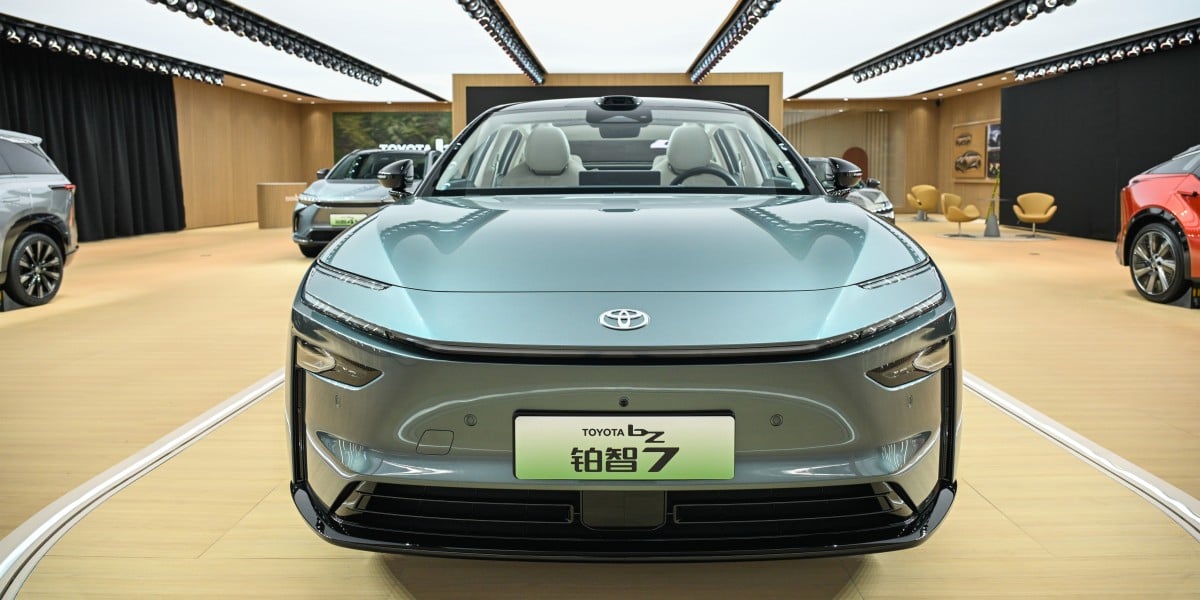Toyota Picks Huawei's HarmonyOS for Its Chinese Electric Sedan
In a move that signals the growing influence of Huawei's HarmonyOS in the global tech industry, Japanese automaker Toyota has chosen the operating system for its new range of electric vehicles in China. The decision comes as Toyota shifts its approach to building cars for the Middle Kingdom, focusing on local innovation and adapting to changing market conditions.
The star of Toyota's new range is arguably the bZ7, an electric sedan designed solely for the Chinese market. With HarmonyOS powering its infotainment system, navigation, and vehicle control, the bZ7 represents a significant milestone in Toyota's efforts to establish itself as a major player in China's booming EV market.
"From adapting to China to being defined by China," Toyota's approach to building cars for the Middle Kingdom has undergone a significant transformation. The new range of electric vehicles reflects this shift, incorporating local innovation and cutting-edge technology that is tailored to meet the unique needs of Chinese consumers.
HarmonyOS, created by Huawei to break its dependence on Android, offers a number of benefits that align with Toyota's goals. With a single account, users enjoy a consistent and connected user experience across all devices, from smartphones and tablets to smart TVs and more.
A Shift in Focus for SK Telecom
In related news, Korea's SK Telecom has announced plans to replace customer SIMs after a malware attack compromised the security of its subscribers' personal data. The carrier has taken proactive steps to mitigate the risk of SIM swapping attacks, which are increasingly becoming a threat to mobile users worldwide.
Over five million customers – approximately a quarter of SK Telecom's subscribers – have already applied for free replacement SIMs. The carrier has apologized and warned subscribers that demand for replacement SIMs may be so high that they should consider making an appointment at one of its retail outlets.
A Push towards Digital Greening
In another development, the Chinese government has issued a 22-point plan to promote digital greening in various industries. The "Key Points for Digital Greening and Collaborative Transformation and Development in 2025" aims to reduce carbon emissions from data centers, base stations, and other digital infrastructure.
Beijing's goal is to accelerate green transformation across key sectors such as electricity, mining, metallurgy, petrochemicals, transportation, logistics, construction, urban operation, and modern agriculture. The initiative also seeks to promote the use of electronic information products in a more sustainable manner.
Automating Satellite Docking
Meanwhile, India's space program has made headlines once again with its successful docking of two orbiting satellites. The Indian Space Research Organisation (ISRO) repeated this feat last week, using autonomous systems to handle the final docking process.
The experiment involved operating a heater element in one of the satellites through power from the other satellite. The duration of power transfer was approximately 4 minutes, and the performance of the satellites was as expected.
Improving Digital Literacy
In China, efforts to improve digital literacy have taken center stage. The nation's Cyberspace Administration has announced a program aimed at enhancing digital skills among citizens.
The initiative seeks to promote digital inclusion and provide training opportunities for those who require them. As part of this effort, Chinese officials have also revealed plans to select Taikonauts from Hong Kong and Macau for future space missions, reflecting the country's commitment to its "One Country, Two Systems" policy.
Grab Automates Business Processes
Singapore-based ridesharing giant Grab has made significant strides in automating business processes using its new LLM agent frameworks. The company claims that these frameworks have achieved remarkable results, with over 99.8 percent accuracy in real-world use cases.
Grab's engineering team has highlighted the potential of these frameworks to transform enterprise operations, reducing handling times and increasing efficiency. The company's Account Takeover Investigations (ATI) bot is just one example of how LLM technology can be used to automate complex tasks with high accuracy.
